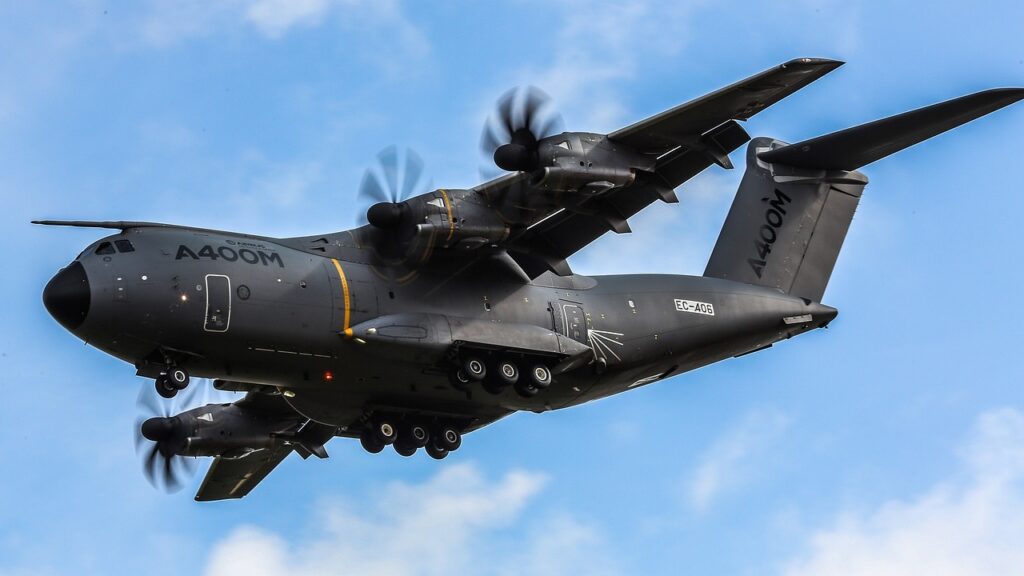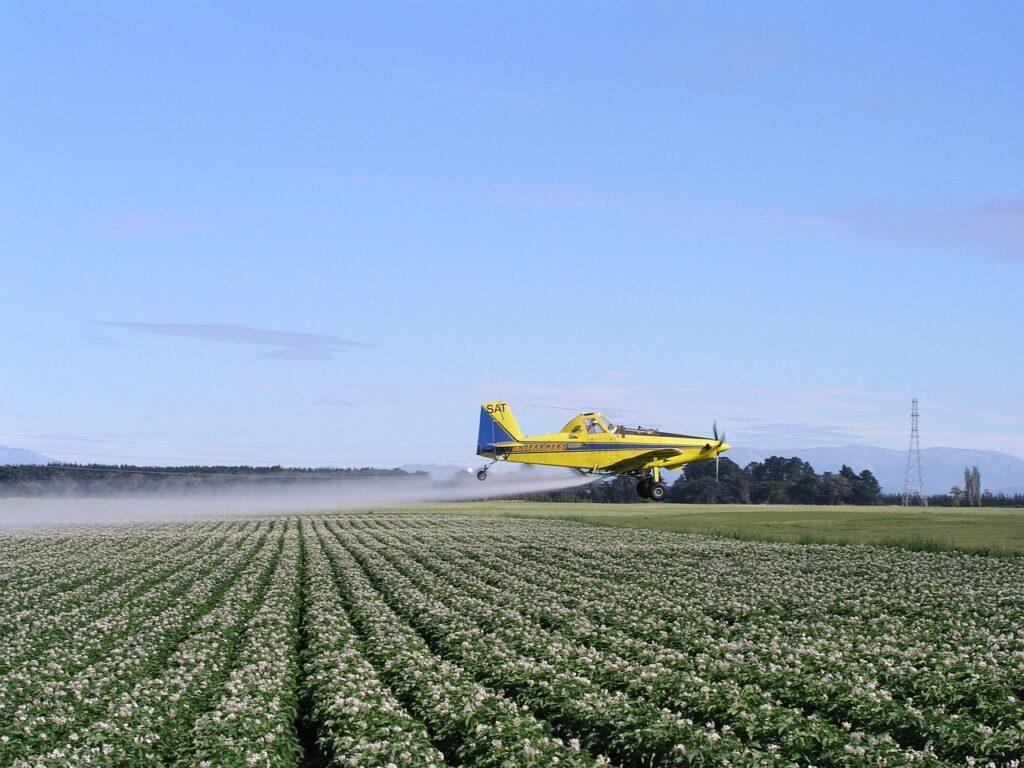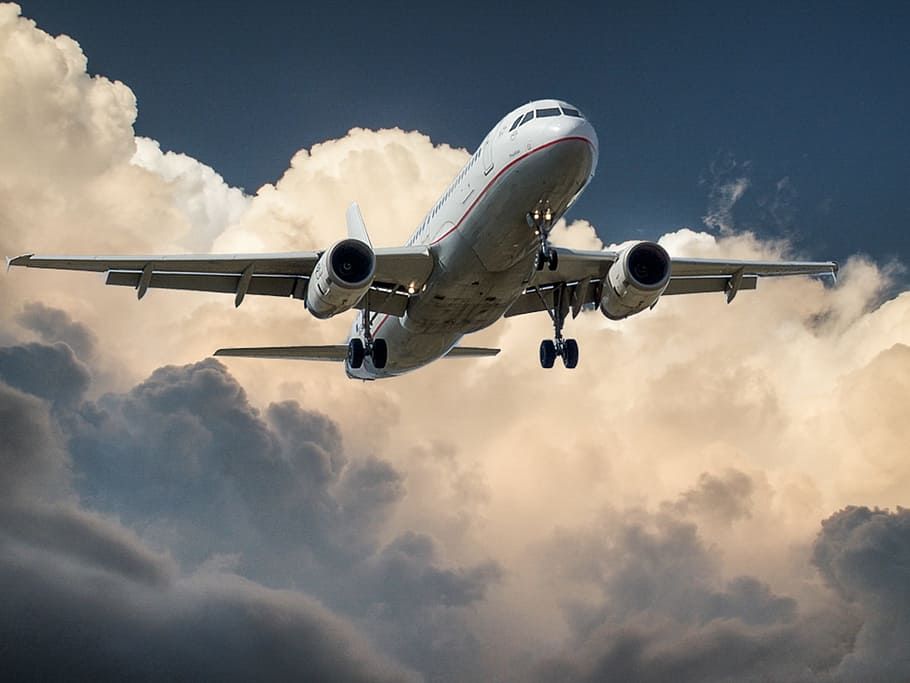
Ever found yourself gazing out of an airplane window, lost in thought about the sheer marvel of flight? Maybe you’ve even chuckled at the classic comedy ‘Airplane!’, wondering about the real-life mechanics that keep those massive machines gracefully aloft. Well, get ready to have your mind, and your understanding of the skies, expanded, because we’re diving deep into the incredible, diverse world of aircraft that make everything from your summer vacation to critical global operations possible!
It’s easy to think of planes as just, well, planes. But the aviation industry is a vibrant tapestry woven with an astonishing variety of aircraft, each meticulously designed for specific purposes. From the tiny propeller planes you might spot at a local airfield to the colossal jumbo jets that dominate international routes, the journey of aviation history extends over centuries, pushing the boundaries of what fixed-wing aircraft can achieve.
So, if you’re a curious traveler, a budding aviation enthusiast, or just someone who enjoys a good listicle (we know you’re out there!), buckle up! We’re about to embark on an exploration of some truly wild and wonderful airplane types. This first leg of our journey will introduce you to the giants of passenger and cargo transport, as well as the high-performance workhorses of military aviation. You might just find yourself appreciating your next flight in a whole new way.

1. **Commercial Airliners**When you think of a typical vacation flight, chances are you’re picturing a commercial airliner. These magnificent machines are the backbone of long-distance passenger and freight transportation, making it possible to jet between major cities across the globe. They are absolutely essential to the world’s transportation system, facilitating the speedy and effective transfer of both people and products.
Commercial airliners are typically larger than their regional counterparts, designed to handle the demands of busy routes and carry hundreds of passengers at once. They are furnished with a range of amenities aimed at providing a relaxing and secure flight, ensuring your journey is as smooth as possible. These aircraft truly connect the world, shrinking distances and opening up new possibilities for travel and commerce.
Consider titans like the Boeing 747, which boasts a capacity of up to 660 people, or the colossal Airbus A380, capable of carrying an astonishing 853 passengers. Even the Airbus A320, a more common sight, can accommodate up to 240 passengers. With a history stretching back to the first commercial passenger flight in 1914, these aircraft have profoundly shaped our modern world, becoming an indispensable part of global transit.

2. **Regional Airliners**While commercial airliners conquer the long-haul routes, regional airliners play an equally vital role in connecting communities over shorter distances. These aircraft are specifically designed to carry people and goods between towns and cities with lower population densities, often serving routes with reduced passenger demand.
Visually, regional airliners are typically smaller than their larger commercial cousins, making them ideal for operating out of smaller airports and on less frequented paths. They are the unsung heroes that ensure residents of more rural or isolated places still have access to the convenience of air travel.
Examples of these workhorse aircraft include the Bombardier CRJ700, which can carry around 76 passengers, and the Embraer E190, with a capacity of up to 114 passengers. Often utilized by smaller airlines or integrated into the networks of larger carriers, regional airliners provide crucial connectivity, linking smaller towns with bustling transit centers and expanding the reach of air travel.

3. **Cargo Planes**If you’ve ever wondered how that package from across the ocean arrived so quickly, or how massive components like airplane engines make their journey, look no further than the mighty cargo plane. These specialized aircraft are made primarily to transport goods, including packages, mail, and freight, over vast distances. They are absolutely critical to the global supply chain, enabling companies and organizations to ship goods rapidly and effectively worldwide.
Cargo planes are frequently larger than standard passenger aircraft, and for good reason! They come equipped with specialized features like massive cargo doors, reinforced flooring, and internal container systems, all designed to make the transfer of immense loads as efficient as possible. Some, known as Super Transporters, are specifically designed to haul truly large, heavy, or oversize items that would be impossible to move by other means.
Think about the impressive capabilities of planes like the Boeing 747-400F, which can carry a maximum payload of up to 124 tons, or the Airbus A330-200F, with its capacity for up to 63 tons. And then there’s the legendary Antonov An-124, capable of transporting an astounding 150 tons! These aircraft are not just for commerce; they are also crucial in disaster relief and humanitarian initiatives, enabling groups to swiftly deliver aid and essential supplies to communities in desperate need.
Read more about: Instant Obsession: These 7 Movies Mastered Their First 5 Minutes, And Here’s Why They’ll Hook You Immediately
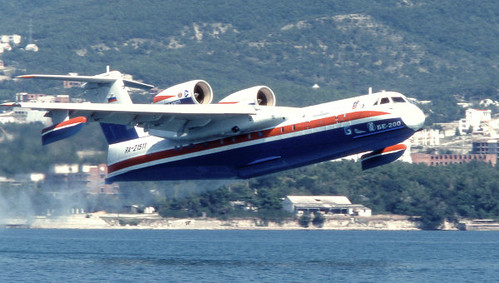
4. **Military Planes**Stepping away from civilian travel, we enter the realm of military aircraft, machines engineered for an entirely different set of demands. Military planes are deployed by armed forces for a range of critical operations, encompassing warfare, observation, and transport. These aircraft are built for high performance, often pushed to the limits of speed, agility, and endurance, and they are furnished with various armaments and other specialist tools to fulfill their missions.
The world of military planes is vast and specialized, reflecting the diverse needs of modern defense. They are not merely about combat; their roles include intelligence gathering, reconnaissance, and maintaining a watchful eye over strategically important areas. The technology packed into these aircraft represents the cutting edge of aerospace engineering, constantly evolving to meet new challenges.
Iconic examples that often capture the public imagination include advanced fighter jets like the F-16 Fighting Falcon and the F-35 Lightning II, renowned for their speed and combat capabilities. Then there are dedicated attack aircraft such as the A-10 Thunderbolt II and the Su-25 Frogfoot, designed for close air support and engaging ground targets. These machines are integral to security and defense operations globally.
Read more about: China’s Naval Ascendancy: A Data-Driven Examination of its World-Class Fleet’s Strengths and Strategic Vulnerabilities
5. **Military Transport Planes**Beyond the fast-paced world of fighter jets, military forces rely heavily on a different breed of aircraft: military transport planes. These robust machines are specifically designed to move personnel, essential supplies, and heavy equipment for the armed forces, playing a logistical role that is absolutely vital to any military operation. Without them, armies couldn’t deploy, and crucial aid wouldn’t reach the front lines or disaster zones.
These aircraft are typically larger than combat-oriented military planes, built with the strength and capacity to transport a wide variety of cargo, from vehicles and ammunition to humanitarian aid and troops. Their design prioritizes ruggedness, reliability, and the ability to operate in challenging environments, often taking off and landing from austere airfields not suitable for commercial jets.
Well-known examples include the C-17 Globemaster III, a strategic airlifter capable of rapid global deployment, the A400M Atlas, a versatile tactical transport, and the legendary C-130 Hercules, a proven workhorse that has been in service for decades. These transport aircraft are the logistical backbone, ensuring that military forces have what they need, where and when they need it, to perform their duties effectively.
Read more about: China’s Naval Ascendancy: A Data-Driven Examination of its World-Class Fleet’s Strengths and Strategic Vulnerabilities
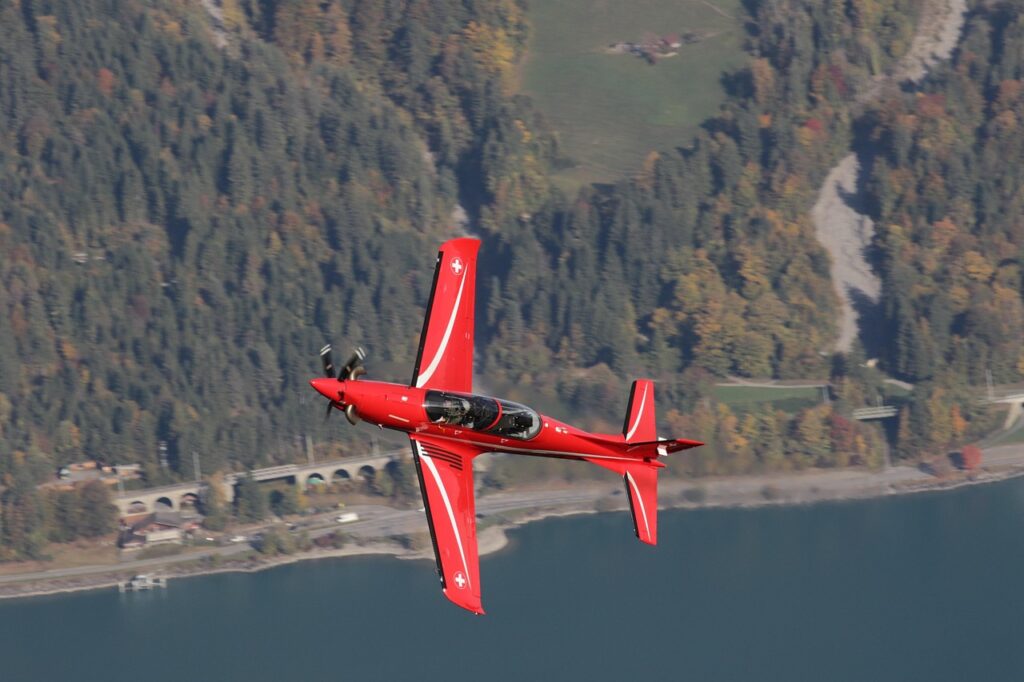
6. **Military Trainers**Even the most skilled military pilots and aviation personnel don’t start out that way. They begin their journey in military trainer aircraft, which are specifically designed to impart a range of aviation-related skills. These include everything from basic piloting techniques and advanced navigation to crucial aircraft maintenance procedures. Trainers are the classrooms of the sky, where the next generation of aviators hones their craft.
These aircraft are often simpler and smaller in design compared to their combat-ready counterparts. This simplicity is intentional, as it makes them easier to operate and maintain, allowing trainees to focus on mastering fundamental skills without being overwhelmed by complex systems. The goal is to create a learning environment that is both effective and safe for aspiring military personnel.
Examples of these foundational aircraft include the M-345 HET, the T-38 Talon, and the T-6 Texan II. These trainers are not just planes; they are crucial components of military readiness, ensuring a continuous supply of highly skilled individuals ready to take on the demanding roles required in modern air forces. They are where precision, discipline, and aerial mastery truly begin.
Read more about: Dallas Cowboys Cheerleaders: Uncovering the Surprising Secrets Behind Their Iconic Glamour, Grit, and Greenbacks!

7. **Military Drones (Unmanned)**The 21st century has seen the rise of a new, incredibly versatile category of military aircraft: drones, or Unmanned Aerial Vehicles (UAVs). These innovative machines are aircraft that can be flown remotely by operators on the ground or, increasingly, autonomously according to pre-programmed instructions. They are employed by military forces for a wide range of operations, including reconnaissance, surveillance, and even attack missions, revolutionizing modern warfare and intelligence gathering.
Military drones are often smaller and less complicated than traditional manned military aircraft, with a key defining characteristic being that they are pilotless. This allows them to undertake missions that might be too dangerous or tedious for human pilots, extending the reach and capabilities of military operations without putting human lives directly at risk. They can loiter over areas for extended periods, providing persistent observation.
Well-known examples of these cutting-edge machines include the RQ-4 Global Hawk, used primarily for high-altitude, long-endurance reconnaissance, the smaller, hand-launched RQ-11 Raven for tactical surveillance, and the MQ-9 Reaper, a formidable hunter-killer drone capable of both reconnaissance and precision strikes. These pilotless aircraft represent a significant leap in aviation technology, fundamentally changing how military forces operate and gather information across the globe.
Alright, aviation adventurers, if you thought the first leg of our journey through the skies was fascinating, buckle up because we’re about to dive into even more intriguing corners of the aircraft universe! While those massive jets and powerful military machines get a lot of the spotlight, there’s a whole world of planes out there doing incredible, specialized work – and some just for the sheer joy of flight! Get ready to discover the unsung heroes and the thrilling side of general aviation.

8. **Warbirds / Vintage Planes**Ever seen a magnificent aircraft from a bygone era soaring gracefully through the sky at an airshow, making you feel like you’ve stepped back in time? Chances are, you were gazing at a warbird! These aren’t just old planes; they’re military planes that have been meticulously kept, refurbished, and brought back to life for exhibition or use in military aviation historical activities, even though they’re no longer in active service. They’re often affectionately known as vintage or classic war planes, and each one tells a story of courage, innovation, and pivotal moments in history.
These incredible machines aren’t just for show, though a big part of their appeal is their breathtaking presence at air exhibitions. Warbirds might also be employed for training purposes, allowing new generations of pilots and mechanics to understand the intricacies of historical aircraft. Sometimes, they even contribute to research, offering insights into past aviation technologies and design philosophies. They’re living museums, offering a tangible link to our aerial past.
When we talk about warbirds, certain names instantly conjure images of daring feats and incredible engineering. Think of the iconic P-51 Mustang, a legendary fighter from World War II, renowned for its speed and range. Or the F4U Corsair, with its distinctive gull wings, a formidable presence in the Pacific theater. And let’s not forget the B-17 Flying Fortress, a symbol of resilience and strategic bombing power. These aircraft are more than just metal and engines; they are cherished artifacts, preserved with passion and dedication.
It’s no wonder then that warbirds are frequently highly sought by collectors and enthusiasts who feel a deep connection to aviation history. The passion for these planes runs deep, transforming them from mere machines into symbols of heritage and a testament to human ingenuity in times of great challenge. Seeing them in flight is a truly exhilarating experience, reminding us of the incredible journey of aviation.
**General Aviation Aircraft: Beyond the Beaten Path**
Now that we’ve explored the grand scale of commercial and military aviation, let’s pivot to a world that’s equally vibrant but often more personal: General Aviation (GA). These aircraft are utilized for a huge range of non-commercial activities, spanning everything from essential business travel to the pure joy of personal flight and even specialized utility roles. This isn’t just one type of plane; it’s a sprawling category encompassing a vast array of designs and purposes.
What makes GA aircraft so special is their incredible versatility and accessibility. They come in a multitude of sizes and designs, making them suitable for everything from short hops to complex missions. You’ll often find them buzzing around smaller airfields, offering hobbyist pilots the freedom to take off and land where larger commercial jets simply can’t. This flexibility is a game-changer for connecting remote communities or simply enjoying a scenic flight.
It’s also worth noting that GA planes are the proving ground for many aspiring aviators. Before progressing to the advanced controls of more sophisticated aircraft, airline and military pilots often begin their training right here, honing their fundamental skills in these versatile machines. They are the backbone of pilot training, forging the next generation of sky masters.

9. **Single-Engine Piston Planes**Imagine a plane that’s straightforward, reliable, and perfect for getting your wings or just enjoying the open sky. That’s precisely what a single-engine piston aircraft offers! These small, light aircraft are powered by, you guessed it, a single piston engine, and they are incredibly popular for brief flights. Many private pilots gravitate towards these planes because of their appealing blend of simplicity, reliability, and cost-effectiveness, making them an excellent entry point into the world of aviation.
You’ve probably seen these familiar faces at local airfields or perhaps even taken a discovery flight in one. Popular examples include the ubiquitous Cessna 172, a true workhorse known for its forgiving flight characteristics, the reliable Piper PA-28 series, and the swift Beechcraft Bonanza. These aircraft are the backbone of flight schools, forming the foundation of countless pilots’ careers before they move on to more complex machines.
Their uses are as varied as the pilots who fly them. Single-engine piston aircraft are frequently utilized for flight training, where budding pilots learn the ropes of takeoff, landing, and navigation. Beyond that, they’re perfect for sightseeing tours, offering unparalleled aerial views, and, of course, for private travel, giving individuals and small groups the freedom to fly on their own schedules. They represent the essence of personal aviation, connecting people to destinations off the main commercial routes.
Indeed, since the very beginning of aviation, single-engine piston aircraft have boasted a lengthy and storied history, contributing significantly to the growth and development of the entire aviation industry. Their enduring design and continued popularity speak volumes about their fundamental role in making flight accessible and enjoyable for so many.
Read more about: Ukraine’s Latest Defense: Missile-Armed Crop Duster Takes Flight Against Drones

10. **Multi-Engine Piston Planes**Ready to step up your game? Multi-engine piston aircraft are where pilots gain increased performance, redundancy, and the capability for more demanding missions. As their name suggests, these aircraft feature more than one piston engine, typically two, offering a boost in power and an added layer of safety. This makes them larger and generally more complicated to fly than their single-engine cousins, often requiring a specialized skill set from the pilot.
These sophisticated planes are well renowned for their dependability, comfort, and adaptability, making them a popular choice for those who need more from their aircraft. While they often serve for personal transportation or business travel, ferrying executives or families efficiently, they are also sometimes pressed into service for smaller cargo operations, proving their versatility in various roles where speed and capacity are important.
You’ll encounter impressive examples like the Piper PA-44 Seminole, a common multi-engine trainer, the robust Cessna 310, or the sleek Beechcraft Baron. These aircraft distinguish themselves not just by their dual engines, but also by numerous advantages, including roomy interiors that offer enhanced comfort for passengers, sizable windows that provide fantastic views, and sophisticated avionics that aid in navigation and flight management, especially in challenging weather conditions.
It’s important to note that the added complexity of flying a multi-engine aircraft means private pilots need to get a special rating to fly them. This extra training ensures that pilots are fully equipped to handle the intricacies of managing multiple powerplants and the emergency procedures associated with them, ultimately enhancing safety and operational capability.
11. **Turboprop Planes**Now, for something that bridges the gap between traditional piston engines and roaring jets, let’s talk turboprop planes! These impressive aircraft are powered by a turbine engine, but here’s the twist: instead of directly producing thrust like a jet, the turbine drives a propeller to create the forward motion. It’s a fascinating blend of technologies that offers unique advantages.
So, how does that turbine engine work its magic? It utilizes a constant stream of compressed air and fuel, which is then burned to produce a high-temperature, high-pressure gas. This energetic gas is expanded through a sequence of rotating blades, converting its thermal energy into mechanical power. This mechanical power is then geared down to spin the large propeller blades, creating the thrust that pulls the aircraft through the air.
Turboprops are renowned for their effectiveness and reliability, especially when it comes to flying medium- to long-distance routes where jet speeds aren’t strictly necessary but fuel efficiency and the ability to operate from shorter runways are highly valued. They excel at lower altitudes compared to pure jets, making them a common sight in regional airline fleets, executive transport, and even some military utility roles where ruggedness and versatility are key.
Their unique propulsion system gives them a distinct advantage in specific operational niches, offering a compelling balance between the lower operating costs of piston aircraft and the higher performance of jets. This makes them incredibly practical for a variety of tasks, ensuring reliable and efficient air travel for many communities and businesses worldwide.
Read more about: China’s Military Ambitions and the F-35 Conundrum: Unpacking the Geopolitical Realities in the Indo-Pacific
12. **Agricultural Planes / Crop Planes**Shifting gears to a truly specialized workhorse, meet the agricultural plane, often known as a crop plane! These aircraft are the unsung heroes of modern farming, designed with a very specific mission in mind: to support agricultural productivity from the air. While they might not be as glamorous as a fighter jet, their contribution to feeding the world is immense.
These highly specialized aircraft are engineered to perform tasks like spraying crops with fertilizers, pesticides, or herbicides, ensuring optimal plant health and yield. They can also be used for aerial seeding, efficiently planting vast areas with new crops, or even for fighting wildfires by dropping water or fire retardant in hard-to-reach areas. Their unique design typically includes features like low wings for better visibility and maneuverability at low altitudes, as well as robust landing gear capable of operating from rough, temporary airstrips right on the farm.
The impact of agricultural planes on global food production and land management is nothing short of significant. By enabling efficient and widespread treatment of crops, they tackle tasks that would be difficult, time-consuming, or even impossible using ground-based methods. This aerial precision helps farmers protect their investments, boost harvests, and ultimately, contribute to the security of our food supply.
So, the next time you enjoy a meal, remember the vital role these dedicated aircraft play. They are a testament to how aviation technology, in all its forms, continues to adapt and serve crucial functions far beyond simply getting people from point A to point B.
Read more about: Beyond the Buzz: Inside the Energy Drink Industry’s Transformative Leap Towards Sustainable Packaging and a Greener Future

13. **Seaplanes (Flying Boats)**Ever dreamed of landing on a serene lake or touching down right next to a secluded beach? Seaplanes, including their close cousins, flying boats, make that dream a reality! These incredible aircraft are uniquely designed to take off from and land on water, offering unparalleled access to environments rich in waterways. They represent a blend of aeronautical and marine engineering, opening up a whole new dimension of travel.
There are primarily two types: floatplanes, which are essentially conventional aircraft fitted with floats in place of wheels, and flying boats, where the aircraft’s fuselage itself is designed as a boat hull, allowing it to float directly on the water. Both configurations are indispensable for accessing remote areas abundant with lakes, rivers, or coastal stretches, like the rugged wilderness of Alaska, the island nations of the Pacific, or the serene fjords of Scandinavia.
These versatile aircraft are often employed for transport to otherwise inaccessible locations, bringing supplies or personnel to remote outposts. They’re also incredibly popular for tourism, offering breathtaking scenic flights over water bodies and unique island-hopping experiences. Furthermore, their ability to operate from water makes them invaluable assets in search and rescue missions, particularly in marine environments where traditional runways are absent.
The operational environment of a seaplane presents its own set of unique challenges, from managing water currents to navigating adverse weather conditions on open water. However, the immense advantage of independence from paved runways and the ability to reach pristine, untouched locations makes them a favored choice for specific missions and adventurous travelers alike, truly showcasing the adaptability of flight.
14. **Gliders**Last but certainly not least in our aerial exploration, let’s turn our attention to gliders – the ultimate expression of pure flight! These aircraft are ingeniously designed to fly without an engine, relying entirely on the invisible currents of the air for lift. They represent a captivating blend of advanced aerodynamics and human skill, offering an experience of unparalleled silence and grace as they soar through the sky.
A glider, often referred to as a sailplane, masterfully translates height into speed, using gravity to initiate forward motion. From there, pilots become true artists of the sky, skillfully exploiting the fundamental forces of lift, drag, and weight to stay airborne for extended periods. They harness natural phenomena like thermals – rising columns of warm air – to gain altitude, or ride ridge lift, where wind is pushed upwards by terrain. Some even ascend on vast, invisible atmospheric waves, allowing for flights of incredible distance and duration. This is where the principles of airfoils, angle of attack, and the Bernoulli effect, which describes how faster air creates lower pressure over the wing’s curved surface, become exquisitely practical.
For many, gliding is more than just a mode of transport; it’s a challenging sport and a deeply rewarding recreational activity, offering a profound connection with the atmosphere. It demands a keen understanding of meteorology, exceptional piloting skills, and an appreciation for the subtle dance between aircraft and air. The efficiency of gliders is legendary, often characterized by their long, slender wings that maximize lift and minimize induced drag, showcasing aerodynamic design pushed to its elegant limits.
Gliders remind us that while engines provide power, the true magic of flight lies in understanding and working with the air itself. From the earliest days of aviation experiments to today’s high-performance sailplanes, these silent wings continue to inspire awe and demonstrate the incredible possibilities of unpowered aerial navigation, offering a unique perspective on our world from above.
Read more about: From Willys to Wagoneer: 18 Iconic Jeeps That Made History
And there you have it, fellow sky-gazers! From the colossal commercial giants to the silent, soaring grace of gliders, the world of fixed-wing aircraft is an incredibly diverse and continuously evolving tapestry. Each type, with its unique design and purpose, plays a vital role in our modern world, whether it’s connecting continents, safeguarding nations, or simply enabling the sheer exhilaration of flight. So, the next time you look up, remember the astounding variety of machines painting paths across the blue — and maybe, just maybe, you’ll feel a renewed sense of wonder for the boundless skies above!

